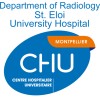
TELE-monitoring in Chronic Obstructive Pulmonary Disease
COPDCOPD is the fourth cause of death worldwide and it is expected to be the third in 2020. Non-invasive ventilation (NIV) has a positive impact in reducing mortality related to chronic respiratory failure in stable patients with COPD. Moreover, the addition of home NIV to home oxygen therapy reduces hospital admissions and improves patients outcomes. Patients monitoring is crucial. It is increasingly recognized the potential of telemedicine in reducing morbidity and mortality, as well as healthcare utilisation and its associated costs. In particular, home telemonitoring (TM)- a technology measuring patients'clinical parameters and symptoms at home and allowing communication between healthcare professionals and patients over distance- has gained much attention. However, despite a growing body of evidence for TM in the management of COPD and other chronic diseases, the benefit of telemonitoring for Home mechanical ventilation concerning clinical and economic outcomes remains to be clearly demonstrated. The study aims to assess the impact that telemonitoring would have NIV efficacy, patient quality of life and satisfaction, through a prospective randomized study.The primary endpoint is the time for appropriate adaptation and therapy efficacy, defined as average SatO2 to 90% in 24h oximetry.

Determinants of Lower Limb Muscle Atrophy Induced During an Hospitalization for Exacerbation of...
Chronic Obstructive Pulmonary Disease (COPD)Exacerbation Copd1 moreChronic Obstructive Pulmonary Disease (COPD) is characterized by persistent airway obstruction and inflammatory response of the lungs and bronchi. Episodes of exacerbations contribute to increase the severity and prognosis of the disease. Muscle dysfunction (loss of strength and muscle mass) is one of comorbidities affecting 30% to 60% of patients and playing a key role in their prognosis. Indeed, several studies have shown muscle weakness during hospitalization for exacerbation of COPD by measure of maximal voluntary contraction of quadriceps (MVCQ), but the results are variable from one patient to another. Moreover, no study was interested in the change of muscle mass in patients hospitalized for an exacerbation of COPD. Several mechanisms have been mentioned but not demonstrated: systemics factors (initial amyotrophy, inflammation, oxidative stress, corticotherapy, hypoxia…) but also physical inactivity. In this context, identifying factors associated with the onset of muscle weakness during hospitalization for exacerbation of COPD is a necessary step to better understand the mechanisms and consider a personalized therapeutic approach that can improve the functional and clinical prognosis of disease. The primary outcome is to identify the clinical and biological determinants associated with the onset of amyotrophy (Measure by ultrasound of sectional area of the Rectus Femoris, CSARF), during hospitalization for exacerbation of COPD. The secondary outcome is to identify the clinical and biological determinants associated with the onset of MVCQ decrease, during hospitalization for exacerbation of COPD. 120 patients hospitalized for exacerbation of COPD will be recruited in two hospitals (CHU Montpellier - CHU Grenoble, FRANCE). The measures of CSARF and MVCQ are carried out on the second, fifth, eighth day of hospitalization, on discharge and on the sixtieth day after hospitalization. A blood test will be performed on the second day of hospitalization to explore different markers of inflammation and oxydative stress. Moreover, to quantify the level of physical activity (number of steps), each patient will carry a pedometer throughout the duration of hospitalization. At the end of protocol, two groups will be made from the median of CSARF : patients with a small reduction in CSARF compared to patients with a greater reduction in SSRF between the second and eighth days of hospitalization (or between the second day of hospitalization and discharge). Then clinical (comorbidities, severity disease, initial weakness, initial amyotrophy, usual physical activity before hospitalization, treatment, exacerbation number in the previous year…) and biological (markers of inflammation and oxydative stress) determinants were compared between the two groups. Thus, the identification of the determinants associated with the onset of amyotrophy induced during exacerbation of COPD will guide research for exploration of physiopathological mechanisms of this muscular dysfunction in the exacerbation of COPD as well as to identify a personalized support.

CAN BREATHE in COPD Trial
Chronic Obstructive Pulmonary Disease (COPD)Breathlessness1 moreA growing body of physiological evidence now exists to support a potential role for inhaled cannabis in the medical management of adults with chronic obstructive pulmonary disease (COPD), particularly as it may related to improving pulmonary function, alleviating the symptom of breathlessness and improving exercise endurance. The purpose of this randomized double-blind crossover trials is to evaluate the efficacy and physiological mechanism(s) of action of inhaled vaporized cannabis targeted to relief of physical activity-related breathlessness and exercise endurance in symptomatic patients with severe-to-very severe COPD.

Intervention Strategy in Chronic Obstructive Pulmonary Disease With Anxiety and Depression
COPDAnxiety1 moreAnxiety and depression have negative effect on outcomes of chronic obstructive pulmonary disease (COPD). Intervention strategy including behavioral-cognitive therapy and pulmonary rehabilitation are promising in improving life quality, disease symptom and outcomes. But there's not standard algorithm in China so far. The study aims to compare the effectiveness of these interventions and develop an intervention algorithm of anxiety and depression in COPD.

Effect of Home-base Exercise With Conical-PEP Device on Physical Performance and Quality of Life...
Chronic Obstructive Pulmonary DiseaseThe aim of this study to investigate the efficacy of a home-base exercise program with a new conical PEP device on physical performance and health related quality of life in COPD patients.

Study of Interventional Pulmonologic Treatment of Benign Central Airway Fibrotic Stricture
Obstructive Airway DiseaseThe purpose of this study is to evaluate the efficacy and safety of four interventional pulmonology techniques for the treatment of fibrotic central airway stricture. The four techniques are: balloon dilation balloon dilation plus cryotherapy balloon dilation plus spiculiform electrosurgery balloon dilation plus mitomycin C injection

An Efficacy Study of BCS Clearing the Oral Colonized Bacterium in Hospitalized Patients With COPD...
Chronic Obstructive Pulmonary DiseaseThe purpose of study is to evaluate the efficacy and safety of Benzalkonium Chloride Solution clearing the oral colonized bacterium in hospitalized patients with COPD.

Feasibility & Effect of a Tele-rehabilitation Program for Chronic Obstructive Pulmonary Disease...
COPDIntroduction In order to guarantee chronic patients and elderly a high quality service from health care organizations in the coming decades, new technologies have been implemented to treat patients from a distance. There is still a need for more studies on the efficacy and cost-effectiveness of tele-rehabilitation (TR) and its long-term effects needs also to be determined. To guarantee individuals with chronic obstructive pulmonary diseases (COPD) a high quality service from health care organizations in the coming decades and economically save the national health systems for an expensive bill for the treatment of COPD, new actions plans has to be taken into use. Hereby, more patients can be treated with less human resources while still sustaining or even improving today's services. The importance of such welfare action plans has to maintain a high quality of service that individuals with COPD are willing to accept. Here, TR seems to be a good welfare action plans. Despite proof of improved cost-effectiveness, no studies support the benefits of TR in COPD patient with respect to adherence, security, treatment efficacy and improved quality of life. Aim To assess and compare the feasibility and effect of a tele-rehabilitation program with a new and innovative TR platform (NITRP) compared to standard treatment with respect to exercise capacity, quality of life and activities of daily living in patients with COPD. Method and material The study is a prospective randomized controlled trial comparing the effects of tele-rehabilitation and conventional rehabilitation in patients with severe COPD. 54 patients fulfilling the inclusion criteria will be randomized in two groups to either a 8 week tele-rehabilitation program or a conventional COPD rehabilitation program at the hospital. Participants will be tested at baseline, 8 weeks, 3 and 6 months after cessation of the training programs. In the intervention group, a real- and a virtual physiotherapist agent will facilitate the rehabilitation. Ethical considerations This study will not pose any risk to the patient as compared to current practice. Participation is voluntary and the patient may at any time withdraw from the study without consequences for future care or treatment. The questionnaires and the test methods used are clinically recognized instruments. Signed informed consent will be obtained from the all participants after verbal and written information and before the study starts. The study will not be initiated before approval from the Ethics Committee and the Data Protection Agency has been obtained. The study will follow the general research ethical rules as expressed in the Helsinki Declaration II.

The Physiological Effect of High Flow Oxygen Therapy
High-flow Nasal CannulaNon-invasive Positive Pressure Ventilation1 moreAlthough non-invasive positive pressure ventilation (NPPV) shows the good curative effect of treating the patients with acute exacerbation of chronic obstructive pulmonary disease (AECOPD), some patients do not tolerate NPPV or do not benefit from it. High-flow nasal cannula (HFNC) is well tolerated and may be used to patients with AECOPD who are intolerant to NPPV treatment. This study is to evaluate the physiological effect of HFNC and compare it with NPPV.

Transcutaneous Electrical Diaphragmatic Stimulation and Inspiratory Muscle Training in Patients...
Chronic Obstructive Pulmonary DiseaseChronic Obstructive Pulmonary Disease (COPD) is characterized by chronic airflow limitation, a qualification of impairment of respiratory muscle function, including hyperinflation and muscle weakness. Thus, pulmonary rehabilitation is indicated for patients and is recommended for even the most severe cases. However some patients do not conclude conventional rehabilitation protocols, due to exercise intolerance, are then an electrical estimation and muscle training respiratory adjuvant treatments for patients. and little has been explored about the effects and methodologies of using transcutaneous electrical diaphragmatic stimulation (TEDS) in healthy subjects. The objective of this study on stage I is to evaluate the acute effect of transcutaneous electrical diaphragmatic stimulation on respiratory muscle strength, cardiac variability, thickness, resistance, mobility and diaphragmatic activation comparing different frequencies of electrical stimulation in healthy individuals. The objective of this study on stage II is to evaluate the effects of transcutaneous electrical diaphragmatic stimulation, compared to inspiratory muscle training on respiratory muscle strength, security of the technics, thickness and diaphragmatic function in healthy individuals.The objective of this study on stage III is to evaluate the effects of transcutaneous electrical diaphragmatic stimulation, compared to IMT on respiratory muscle strength, lung function, thickness and diaphragmatic function in patients with exacerbated chronic obstructive pulmonary disease. The study was approved by the Research Ethics Committee of the Hospital de Clinicas of Porto Alegre (CAEE: 80271517.2.0000.5327).
